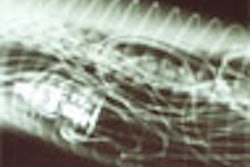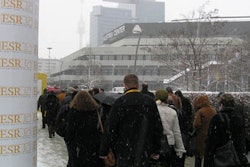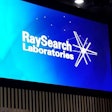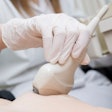When Wallace T. Miller Jr. was growing up he knew one thing for sure. He wasn't going to be a doctor.
But life doesn't always turn out the way you think it will, especially when your father -- Dr. Wallace T. Miller Sr. -- is a very well-respected radiologist, teacher, and residency director at the Hospital of the University of Pennsylvania (HUP). Today, Dr. Miller Jr. is a well-known radiologist in his own right, and is HUP's associate chair of education in the radiology department.
"In my family, we joke about the radiology gene; this ability to recognize things in three dimensions and spatially identify things," Miller Jr. said. "It is clear my Dad has it and I have it, too."
When Miller Sr. began his career in radiology as a resident in 1957, the tools of the trade were basic x-rays, with none of the digital acquisition and automatic processing of today. "When people talk about wet readings, that is what we did," he said. "We read them wet and they dried in the next couple of hours."
And, like other radiologists of the time, Miller Sr. read all x-rays, from bone to gastrointestinal to chest. By the early 1970s, radiologists began to specialize in one area or another, as it became more difficult -- in Miller Sr.'s words -- "to know everything about everything." That's when he decided to become a chest radiologist. "I chose chest, because I thought that's where most of the action was," he added. "Although it is sometimes very simple, sometimes it is very complex. So, to me, it was more interesting."
Miller Sr. also took a major role in teaching incoming radiology residents. Among them was his son. "I always thought of my dad as a great guy, but I looked at him like he's my dad," Miller Jr. recalled. "I came to the medical school and he was like the oracle for radiology. People would have a discussion on the floor and one would say, 'Well, Wally says …' and the discussion would stop and that was the final answer. As a medical student, my whole perception of him changed."
While the elder Miller influenced his son's expertise, Miller Sr. readily added, "Wally basically developed the way he wanted to. I don't think I treated him any different than any of the other residents."
Side by side
The fact that the father-son duo works in the same department has led to the occasional confusion over which Dr. Miller was which, and, as one would expect, they haven't always come to the same conclusion when interpreting images. "We are both strong-minded people," Miller Jr. said. "When I was a junior person, he was always right, but I would say now it's about 50/50."
Miller Jr. published an educational text in April, dedicating the book to his father, because -- in his words -- "the core of what I teach in the book I learned from him. I don't teach things exactly the same way as he does, but it all has its roots in what he taught me." The book, Diagnostic Thoracic Radiology, is published by McGraw-Hill.
"Without a doubt," he added, "my dad is the best teacher I ever had -- period, bar none -- not because he is my dad, but because he is a wonderful teacher and fantastic role model."
Today, Miller Sr. is semiretired, works a daily shift from 6 a.m. to 1 p.m., and spends more time reading film and CT and less time teaching. As he reflects on his career at HUP, he believes he will be remembered as a "very effective teacher." Today, many residents return to the hospital and talk about what they learned from the elder Miller.
"On the other hand," Miller Sr. said, "I have always considered myself to be a very good clinical radiologist, so I was a very high-profile guy around the hospital, where most people brought their cases to me."
Radiology's future
Miller Sr. sees much of radiology's past as a window to the future. In the last two decades, new modalities -- such as CT, MR, and ultrasound -- have emerged to change the way radiology is practiced, and he believes a new technology will be developed to again advance the profession.
Digital imaging is one of the more significant developments, Miller Sr. believes, by enabling images to be accessed through a PACS or RIS throughout a hospital. While the increased availability to images has improved patient care, Miller suggested a slight downside.
"One thing I see as a little bit detrimental is that there are huge pressures on people to perform a lot of clinical work, and clinicians are always ordering more x-rays," he said. "This was less true in the old days. I think things were less hurried and there was more collegiality, in the department itself and between other departments."
The trend to handle more readings also leaves less time for teaching residents and consulting with other physicians, Miller Sr. added. "We still do that, but the problem is you get pressed into getting back to work," he said. "That's fine, but you lose the give-and-take in talking with the clinicians to discuss the case."
The next adventure
Miller Jr. sees the greatest promise in functional imaging. "Imaging will start to move into the evaluation of diseases, based on functional parameters, rather than purely anatomic parameters," he said. "PET scanning is the beginning of that. I think radiology is interested in looking at the way organs function and how that may predict disease states."
Miller Jr. may join HUP's functional imaging research team after he soon steps down as the hospital's residency director. Lamenting that the position has become more of an administrative job than a teaching post, he said that "the things I do best are teach and clinical work. I will put more effort into teaching and I'd like to write another book for medical students."
By Wayne Forrest
AuntMinnie.com staff writer
August 11, 2006
Copyright © 2006 AuntMinnie.com



















